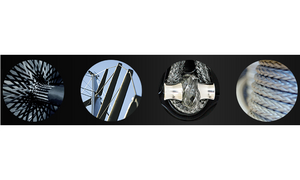
Tautec – Lightweight, extremely durable and state-monitored ropes made of synthetic fibers for use in the maritime sector
Co-funded by Federal Ministry for Economic Affairs and Energy (BMWi),
AiF-ZIM
Duration: November 2014 – October 2016
Steel cables are used in the maritime sector where heavy loads have to be handled reliably. Examples include the laying of submarine cables or the use of anchor lines. However, disadvantages are the large weight and handling. Thus, for example, for the laying of submarine cables a second ship is required just for the transport of steel cable rolls. Due to this, in high-performance sailing sport almost only ropes out of synthetic fibers are used for a weight reduction. The demand for these materials is high, particularly as regards the tensile strength and robustness. However, away from the high-performance sailing sport steel cables are traditionally applied as the advantages and disadvantages have been known for decades.
In this case, in the commercial maritime sector, the use of synthetic ropes would be a serious alternative to the steel cords due to the lower weight and lower rigidity. In addition to easier handling and the lower transport costs are attractive. However, the suspicion is in the durability of these new materials in size, especially the durability depends on the synthetic fiber used, and is therefore difficult to assess. Often the damage is great when a rope breaks, and it is therefore replaced early to minimize risks. Here could be additional cost savings if the exchange of the cables takes place only when it is really necessary. However, this requires a complete local and permanent condition monitoring of high-performance synthetic ropes.
In this project high-performance ropes are to be developed from synthetic fibers to be used as a substitute for steel cables. A key component of the development of a fiber optical measurement system which locally resolved strain and the force acting on the high-performance ropes in real time. For this purpose, fiber optical sensors are to be integrated along the rope during manufacture. The sensor structure is processed quasi continuously along the optical fiber core by applying femtosecond laser technology.